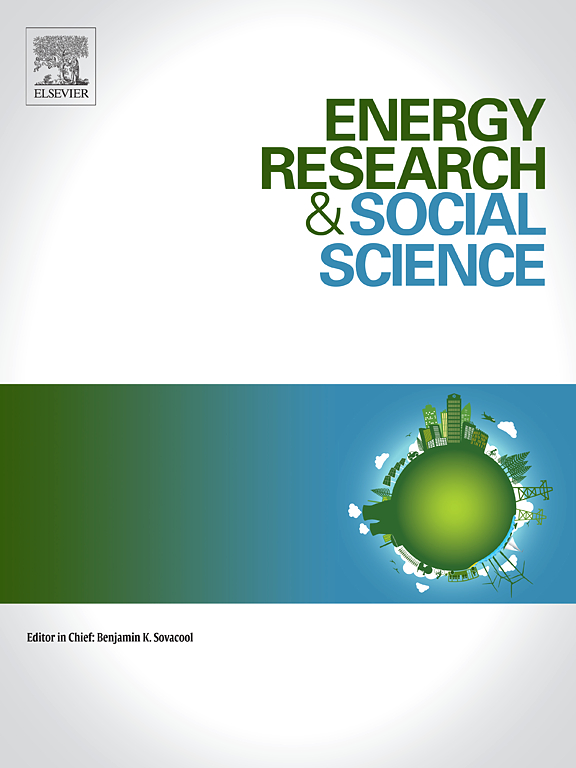Double energy vulnerabilities in France: When residential choices lock households into patterns of energy dependence
IF 6.9
2区 经济学
Q1 ENVIRONMENTAL STUDIES
引用次数: 0
Abstract
This paper focuses on households' choice of a new home to study how patterns of energy dependence are being embedded in everyday lives in the wake of the 2022 energy crisis in Europe. It highlights inequalities in exposure to and protection from rising energy prices, both in domestic and transport energy needs.
Drawing upon conceptual work around double energy vulnerability and residential mobility and a large survey of households that moved in the South-West of France, we analyse the socioeconomic determinants of energy drivers in the choice of a new home. We elaborate a typology of households based on the importance of energy efficiency and mobility costs. The findings reveal that energy concerns, including efficiency and proximity, play a crucial role in residential decision-making. We show how life cycles are determinant in households' preoccupations with energy, but also how income, wealth and homeownership shape residential choices and strategies, determining control over energy costs. Indeed, lower-income households are more associated with a greater concern with mobility and energy efficiency, while wealthier households can offset rising costs with thermal retrofits and mitigate the financial burden of distance.
We argue for expanding double energy vulnerability approaches to considering, within a wider social spectrum, both the adaptive capacity of middle- and high-income households, and the determining role of housing costs. These results highlight the need for policies addressing both energy affordability and sustainable consumption, balancing energy retrofits with measures to control housing costs and prevent increased consumption among wealthier households.
求助全文
约1分钟内获得全文
求助全文
来源期刊

Energy Research & Social Science
ENVIRONMENTAL STUDIES-
CiteScore
14.00
自引率
16.40%
发文量
441
审稿时长
55 days
期刊介绍:
Energy Research & Social Science (ERSS) is a peer-reviewed international journal that publishes original research and review articles examining the relationship between energy systems and society. ERSS covers a range of topics revolving around the intersection of energy technologies, fuels, and resources on one side and social processes and influences - including communities of energy users, people affected by energy production, social institutions, customs, traditions, behaviors, and policies - on the other. Put another way, ERSS investigates the social system surrounding energy technology and hardware. ERSS is relevant for energy practitioners, researchers interested in the social aspects of energy production or use, and policymakers.
Energy Research & Social Science (ERSS) provides an interdisciplinary forum to discuss how social and technical issues related to energy production and consumption interact. Energy production, distribution, and consumption all have both technical and human components, and the latter involves the human causes and consequences of energy-related activities and processes as well as social structures that shape how people interact with energy systems. Energy analysis, therefore, needs to look beyond the dimensions of technology and economics to include these social and human elements.
 求助内容:
求助内容: 应助结果提醒方式:
应助结果提醒方式:


